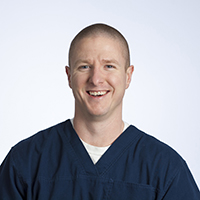Murphy’s Law says that if something can go wrong, it will. There is nothing to prepare an individual for the chaos that consumes an emergency department (ED). Education, drills, simulations, and experience can’t obviate the necessity to be prepared and ready for anything.
As the patient came in, anxious from chest pain and short of breath, staff methodically prepared her for the cardiac catheterization that would ensue, starting I.V.’s, drawing labs, and giving medications, in an efficiently orchestrated maneuver. It was like a NASCAR pit crew preparing a car to finish a race, except the stakes were higher and the race was unfairly organized and started without her consent. Her first inclination of any problem was a pressure that enveloped her chest, making it hard to breath. Thanks to the first responders, she arrived alive and well ready to undergo catheterization.
As the cardiologist and a team of competent nurses transporting her to the cardiac catheterization lab, it started to rain. The drops were few and far between but eventually a proverbial thunderstorm took over, and her rhythm began looking like a lightning strike. The strikes merged together to form ventricular tachycardia and the patient faded into last place in her final race. As the call for help came out, a team was quickly dispatched to resuscitate.
Dr. Seuss said, “The storm starts, when the drops start dropping. When the drops stop dropping then the storm starts stopping.” The drops started flowing tirelessly like a tsunami of fate crashing into the shore. Her pressure was unstable, she couldn’t breathe on her own or manage her airway, and she couldn’t hold still for the catheterization. Eventually, her heart stopped and required compressions. She was defibrillated over and over, while additional lines were started and meds were drawn up and delivered to fight hypotension. The body that lacked an ability to manage vital organ functions was still able to instinctively fight intubation and catheterization. Small jerks of her body occurred after each shock, like the hands on the clock.
I worked tirelessly with one of the greatest pharmacists and my trusted friend. Together with the cardiologist, we resumed care and stabilized the patient’s pressures, as we monitored sedation and titrated six medications all with the patient on the cardiac catheterization table. As each stent was placed, perfusion was restored, and her time in the race continued. It was the thrill of a lifetime to be a part of such an amazing experience. The gift to help someone else stay in the race and the overwhelming sense of joy when the last stent was placed, opening up vessels to supply blood where it was needed most.
Walking back to the ED with our heads held high, we were proud. She made it, and the comradery achieved between us has made our relationship even stronger. It was a scene written for a TV series, proof that Murphy was alive and well. Competency, resiliency, and a constant resolve to save lives construct the backbone and foundation of the individuals who work together against all odds. I consider myself blessed to work with such an amazing group of people and thankful to serve next to them. I am especially grateful for the pharmacist, Jake, and the cardiologist, David. Their selflessness and service to others are inspiring. When it rains, it pours, and I could think of no greater people to weather the storm with.
Eric Keller is an RN in the emergency department at Cleveland Clinic Akron General in Akron, Ohio.



















3 Comments.
Woo hop! You all rock! Never forget that teamwork, and thanks for sharing.
When one patient get sick and busy, other patients get sicker too. Terribly busier and busier always ending up NO BREAK and GO HOME LATE. Working at Surgical Cardiac and Thoracic ICU. Now in PACU. More or less once in every 2 months 2-3 code blues happened in less than hour in the unit. But I am wishing that it will happen too like the UNIT will be quiet and easy and continues throughout the whole shift but never happened thru my entire Nursing Career.
I am interested in NURSING CARE Clinic. Any advise please?
Agree 100% with you.